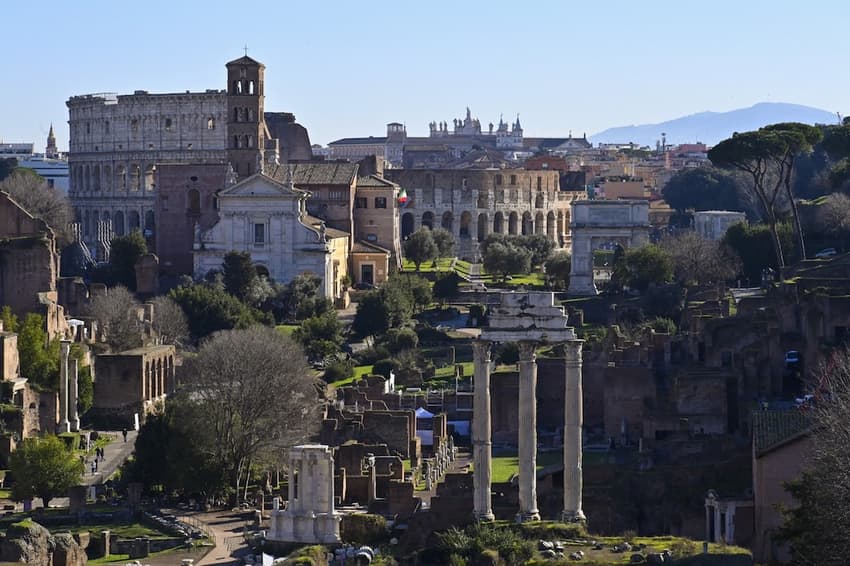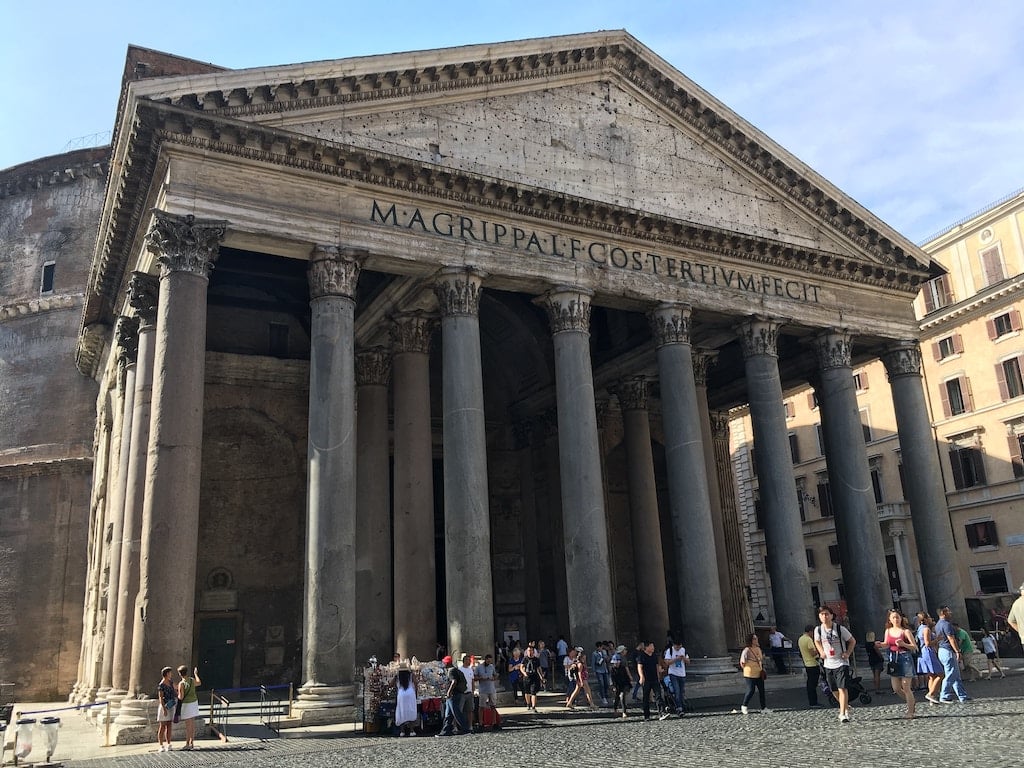Five surprising facts you didn't know about Rome

The Eternal City is full of secrets and surprises - even for long-time residents.
It celebrates its birthday on April 21st
You're probably familiar with the legend of the birth of Rome: twins Romulus and Remus were abandoned by the River Tiber and nursed by a she-wolf, growing up to be brave fighters with ambitions to found their own city.
The two tussled over what should be the starting ground, the Palatine Hill or Aventine Hill. Things got so heated that Romulus ended up having Remus killed and went on to found Rome on the Palatine Hill, becoming its first king and its namesake.
Why Rome celebrates its birthday on April 21st
The ancient Romans pinned these events to April 21st, which they co-opted from an earlier agricultural festival traditionally held on the same date. Over the years, April 21st went from a farming festival to the imposing dies natalis Romae, or 'birthday of Rome'.
These days the event is celebrated with a big parade and a reenactment of a gladiatorial fight on the Circus Maximus racetrack. You'll also be able to see a beam of light flood the Pantheon through its oculus at exactly 12pm; the temple was specifically constructed so this event would take place on Rome's birthday.

2023 celebrations of Rome's birth. Photo by STRINGER / AFP.
It has its own pyramid
You're familiar with Roman temples, amphitheatres and aqueducts - but did you know Rome also has its own ancient pyramid?
The Piramide Cestia was built as a tomb for the politician Gaius Cestius in around 18-12 BC, when Rome was experiencing something of a fad for all things Egyptian.
During their conquest of Egypt in 30BC, Julius Caesar and Augustus plundered numerous ancient Egyptian relics, including eight ancient Egyptian obelisks you'll still find displayed around Rome's piazzas.
Today, you can visit the Piramide Cestia on certain days when Rome's cultural heritage authorities put on free guided tours of its frescoed burial chambers.

Have you visited Rome's ancient pyramid? Photo by ALBERTO PIZZOLI / AFP.
It's home to St. Valentine's skull
Rome has something for everyone, and if visiting the relics of dead saints is your thing, then it definitely has something for you.
One of the more famous saints whose mortal remains reside in the Eternal City is St. Valentine, whose skull sits in a glass reliquary inside the Church of Santa Maria in Cosmedin, best known as the site of the Bocca della Verità.
There's some debate as to whether this is the real skull of the real St. Valentine, as there are around 12 other churches across the world that also lay claim to his relics.
But given that at least two of the three historical figures who might have been St. Valentine lived in Italy, this church seems have as strong a claim as any of them - and it's certainly a more interesting Valentine's Day activity than most.

You can visit St Valentine's skill in the church of Santa Maria in Cosmedin in Rome. Photo by ANDREAS SOLARO / AFP.
You can get married in the Pantheon
The Pantheon may be an ancient Roman temple, but it's also a Catholic church - the church of Santa Maria della Rotunda, to be precise.
It was consecrated in 609 on the pope's request and with permission from the Byzantine Emperor Phocas as Sancta Maria ad Martyres, or Saint Mary and the Martyrs, but later became known more informally as "Saint Mary of the Rotunda".
Thirteen pan-tastic facts about Rome's Pantheon
That means you can attend mass in the Pantheon, including a Christmas midnight mass, and even have a church wedding there, which a handful of couples do every year.
Given the likely difficulty of making such an arrangement considering how many people visit the monument every day, however (you'd probably have to have good friends or close relatives high up in the Church), many more take the easier option and just get their wedding shots taken outside.

Visitors outside the Pantheon in Rome. Photo by Vladislav Glukhotko on Unsplash
Rome fires a cannon every day at noon
If you're in the vicinity of Rome's Trastevere neighbourhood at midday, you may be startled by the sound of a very loud bang: the noise made by the firing of a cannon every day from the Janiculum Hill at 12pm sharp.
It's just a blank, of course: a tradition that started in 1847, when it was introduced by Pope Pius IX in order to synchronise the Vatican's church bells.
The ritual originally started at Castel Sant'Angelo, where it continued until 1903. The cannon was moved to Monte Mario for a year, and finally to the Janiculum Hill, where it remains to this day.
The practice was temporarily put on hold for obvious reasons during World War II, but brought back in 1959 due to popular demand.

The Janiculum Cannon. Photo: Giulietto86/Wikimedia Commons
Comments
See Also
It celebrates its birthday on April 21st
You're probably familiar with the legend of the birth of Rome: twins Romulus and Remus were abandoned by the River Tiber and nursed by a she-wolf, growing up to be brave fighters with ambitions to found their own city.
The two tussled over what should be the starting ground, the Palatine Hill or Aventine Hill. Things got so heated that Romulus ended up having Remus killed and went on to found Rome on the Palatine Hill, becoming its first king and its namesake.
Why Rome celebrates its birthday on April 21st
The ancient Romans pinned these events to April 21st, which they co-opted from an earlier agricultural festival traditionally held on the same date. Over the years, April 21st went from a farming festival to the imposing dies natalis Romae, or 'birthday of Rome'.
These days the event is celebrated with a big parade and a reenactment of a gladiatorial fight on the Circus Maximus racetrack. You'll also be able to see a beam of light flood the Pantheon through its oculus at exactly 12pm; the temple was specifically constructed so this event would take place on Rome's birthday.

It has its own pyramid
You're familiar with Roman temples, amphitheatres and aqueducts - but did you know Rome also has its own ancient pyramid?
The Piramide Cestia was built as a tomb for the politician Gaius Cestius in around 18-12 BC, when Rome was experiencing something of a fad for all things Egyptian.
During their conquest of Egypt in 30BC, Julius Caesar and Augustus plundered numerous ancient Egyptian relics, including eight ancient Egyptian obelisks you'll still find displayed around Rome's piazzas.
Today, you can visit the Piramide Cestia on certain days when Rome's cultural heritage authorities put on free guided tours of its frescoed burial chambers.

It's home to St. Valentine's skull
Rome has something for everyone, and if visiting the relics of dead saints is your thing, then it definitely has something for you.
One of the more famous saints whose mortal remains reside in the Eternal City is St. Valentine, whose skull sits in a glass reliquary inside the Church of Santa Maria in Cosmedin, best known as the site of the Bocca della Verità.
There's some debate as to whether this is the real skull of the real St. Valentine, as there are around 12 other churches across the world that also lay claim to his relics.
But given that at least two of the three historical figures who might have been St. Valentine lived in Italy, this church seems have as strong a claim as any of them - and it's certainly a more interesting Valentine's Day activity than most.

You can get married in the Pantheon
The Pantheon may be an ancient Roman temple, but it's also a Catholic church - the church of Santa Maria della Rotunda, to be precise.
It was consecrated in 609 on the pope's request and with permission from the Byzantine Emperor Phocas as Sancta Maria ad Martyres, or Saint Mary and the Martyrs, but later became known more informally as "Saint Mary of the Rotunda".
Thirteen pan-tastic facts about Rome's Pantheon
That means you can attend mass in the Pantheon, including a Christmas midnight mass, and even have a church wedding there, which a handful of couples do every year.
Given the likely difficulty of making such an arrangement considering how many people visit the monument every day, however (you'd probably have to have good friends or close relatives high up in the Church), many more take the easier option and just get their wedding shots taken outside.

Rome fires a cannon every day at noon
If you're in the vicinity of Rome's Trastevere neighbourhood at midday, you may be startled by the sound of a very loud bang: the noise made by the firing of a cannon every day from the Janiculum Hill at 12pm sharp.
It's just a blank, of course: a tradition that started in 1847, when it was introduced by Pope Pius IX in order to synchronise the Vatican's church bells.
The ritual originally started at Castel Sant'Angelo, where it continued until 1903. The cannon was moved to Monte Mario for a year, and finally to the Janiculum Hill, where it remains to this day.
The practice was temporarily put on hold for obvious reasons during World War II, but brought back in 1959 due to popular demand.

Join the conversation in our comments section below. Share your own views and experience and if you have a question or suggestion for our journalists then email us at [email protected].
Please keep comments civil, constructive and on topic – and make sure to read our terms of use before getting involved.
Please log in here to leave a comment.